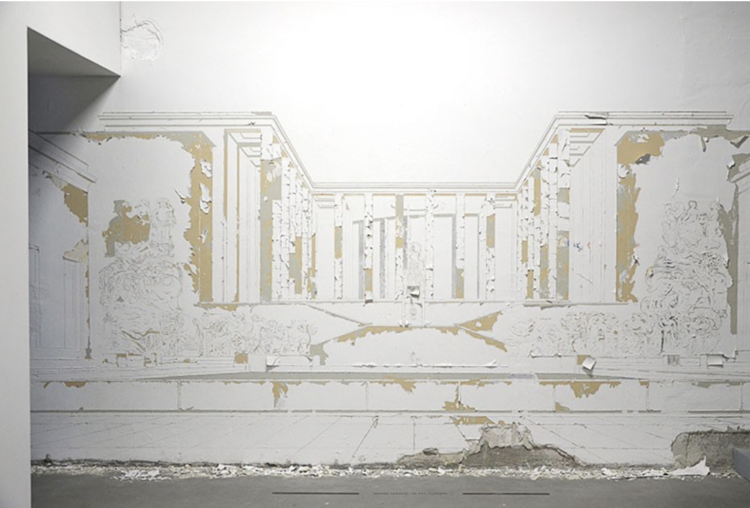
Leyla Cárdenas
Residency
August 2, 2020
Leyla Cárdenas’ context-responsive art practice deals predominantly with urban ruins and city landscapes as manifestations of social transformation, loss and historical memory.

Found remains, fragments and discarded structures are all used as material for her installation, sculpture and mixed-media work, with a strategy that is as equally destructive as it is constructive. Cárdenas received her BFA from Los Andes University in Bogotá, Colombia and her MFA from the University of California, Los Angeles (UCLA). She was recently part of the Cuenca Biennial in Ecuador (2018). Her work Excisión was part of the show Home, so different, so appealing at the Museum of the Los Angeles County (LACMA) as part of the Getty’s Pacific Standard Time: LA / LA and in the Museum of Fine Arts of Houston (MFAH) (2017). In addition, her work has been shown at Palais de Tokyo, Paris, Galería Max Estrella, Madrid, Casas Riegner Gallery-Bogotá, Q21Museums Quarti-er-Wien,Museo de Arte de Zapopan-México, CAM-Raleigh, Institute of Contemporary Art-San Jose (SJICA), Galería Josée Bienvenu-NY, Museo de Arte Moderno-Medellín, Maison de l ́Amérique Latine-Paris, Apexart-New York, and Banco de la República Bogotá, among others.
DESTRUCTION, CONSTRUCTION AND THE PASSAGE OF TIME
Cárdenas describes her practice as a desire ‘to make sense of the world through the fragments that have been left behind’. This archeological approach looks at walls, floors and ruins as untapped archives in need of in-depth analysis, able to configure buried historical narratives or suppressed collective memory. Although she works through a number of different mediums, Cárdenas’ body of work is a coherent representation of these ideas; often marked by the gesture of accelerated destruction, though usually liberated from the rigidity of human-imposed limits of time.
Cárdenas began her talk by introducing a number of earlier works, such as Removed (2013), a site-specific peeled “drawing” that she exhibited at the Palais de Tokyo, Paris. After the show opened, Cárdenas returned to the site every few weeks to accelerate the process of decay by chipping at the paint with her scalpel. This intervention into time and space explores the inevitable void left by demolition, and the presence of absence in both destruction and renewal. Removed further comments on the cyclical tide of gallery spaces – where the erasure of each show marks the beginning of another with an opaque layer of paint.
Cárdenas also introduced a number of ‘sculptural photography’ works, as exemplified by Permutaciones (Estudio #1) (2014), and Reversed Geology (2017-2018). The former is a photographic image of a derelict building printed onto discordant fragments found at demolition sites across Bogotá, while the latter is a fine-art print of a natural landscape mounted on brass and mortar.
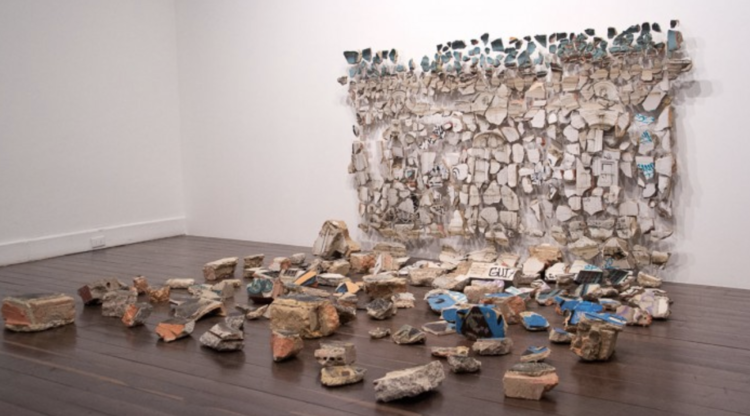

These ‘sculptures’ blend material solidity with an ephemeral imprint or trace, igniting a dialogue between past and present that encapsulates the artist’s interest in the Anthropocene, a new geological period defined around humanity’s impact on the biosphere.
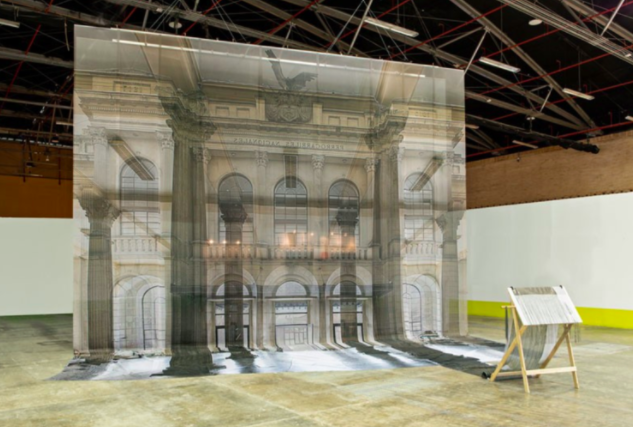
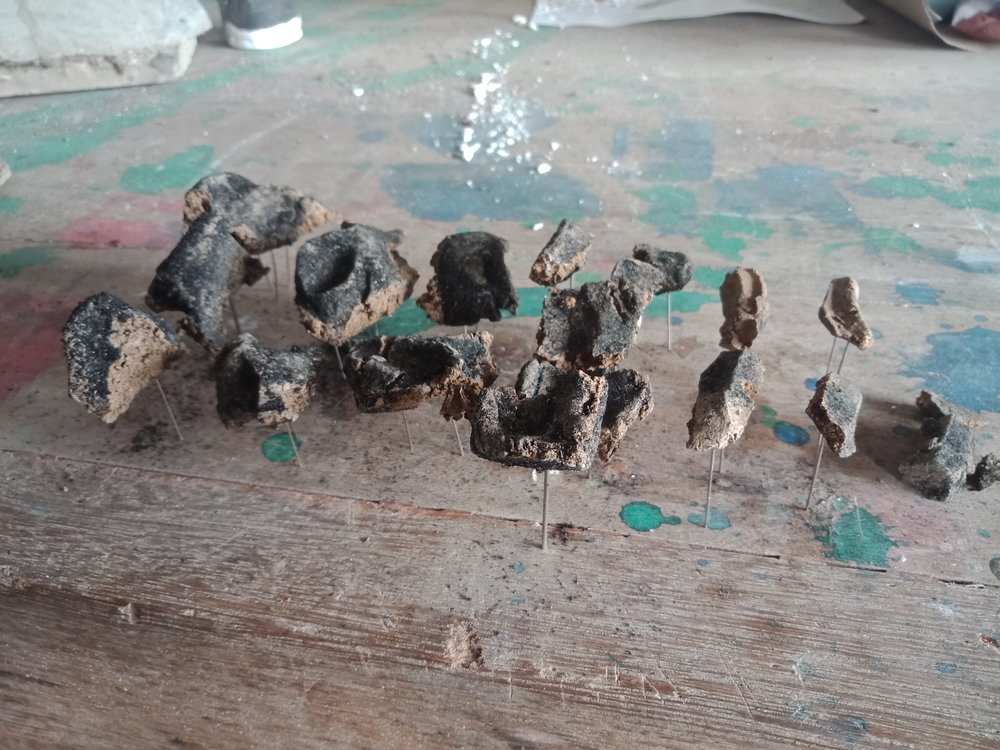

Cárdenas went on to explain that Bogotá’s central railway station, Estación de la Sabana, no longer functions as an entrance or an exit into the city. Especular (2017), a digital print of the station’s facade onto a veil, is an ode to the city’s derelict public spaces, as well as a reminder of Colombia’s relentless return to an unrealised dream of achieving ‘modernity.’
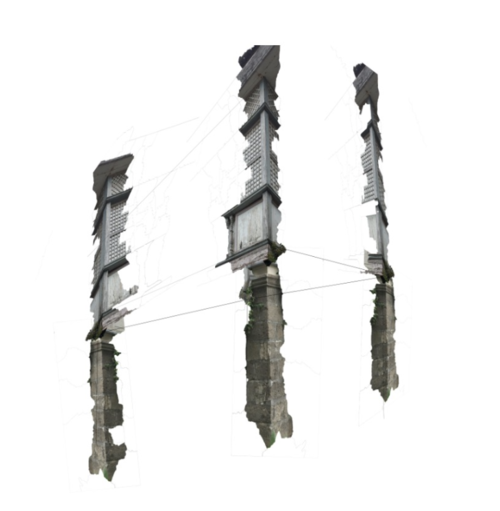
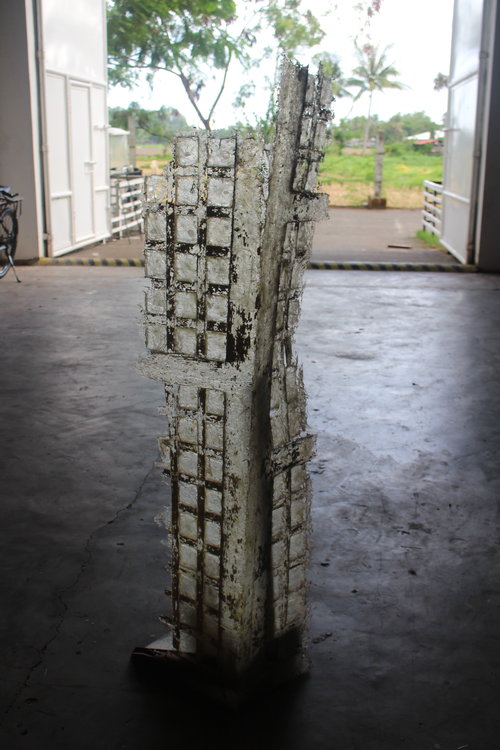
Cárdenas was fascinated by her surroundings in Bataan, the geographical antipode to Colombia and a literal ‘world away’ from her usual comfort zone. She described the experience of staying at Las Casas, a colonial heritage site with a multi-layered architectural history and integrated artisan workshops, as incredibly stimulating – not only in terms of its materiality, but through the questions concerning issues of patrimony, time, displacement, loss and restoration that arose.
She was fascinated by the constant process of construction and preservation carried out by the site’s artisans, who spend each day ‘slowly building, piece by piece, fragment by fragment, a reconstructed environment, in a communal effort of restoration and care’. Therefore, when she found material to work with during her residency, Cardenas likened her work to that of an archeologist attempting to comprehend the whole through its fragments, via a similar process of piecemeal reconstruction.
Cárdenas was further intrigued by the site’s charged, multilayered environment and precarious seaside location;wherein time is constantly revealing itself, not due to an act of human erasure, but by the inevitable process of erosion. By watching the effects of the sun, sand, ocean water, wind and termites on different materials and structures at Las Casas, she was reminded of ‘the fragility and ephemerality of life and of our constructions’, which are often illusions of permanence and solidity.

As a result, Cárdenas became particularly drawn to the moulds in the workshops as a way to explore these questions. She took a cast of the corner of a window-pane using translucent fibre-glass, which captured an ephemeral outline, or imprint, of the discarded material. Her fully-formed idea (see diagram above) was to cast the complete corner of a historical structure that was unable to be transferred to Las Casas, to preserve and reveal aspects of its soon-to-be-erased exterior and interior.
Drawing near the end of her residency, Cárdenas conducted a collective drawing workshop on the beach with the artisans, during which the participants watched the sea’s inevitable erasure of their sand-made shapes. This experiment was concerned with ‘the very last edge of solidity that is left when everything else dissolves and erodes’, a concept that is explored and echoed throughout her body of work.
To conclude her residency, Cárdenas led our first ESKWELA seminar on the topic of Context Responsive Art Practice. Over two days, she discussed the processes behind her site-specific praxis, as well as engaging with participant presentations.
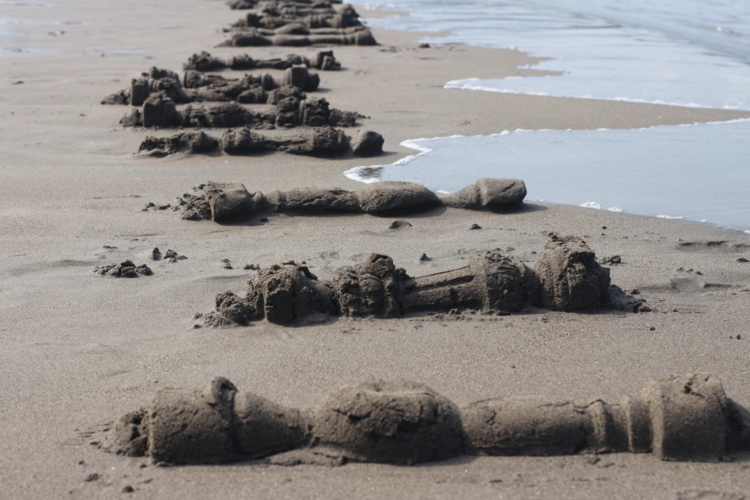

We would like to extend our gratitude towards Leyla Cárdenas for bringing these new perspectives to light and to the participants for their contribution to the session’s dynamic dialogue.
Bellas Artes Projects
2/F Victoria Towers
Panay Avenue cor. Timog Avenue
Quezon City 1103
info@bellasartesprojects.org
programmes and interesting events.

